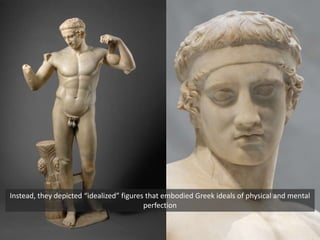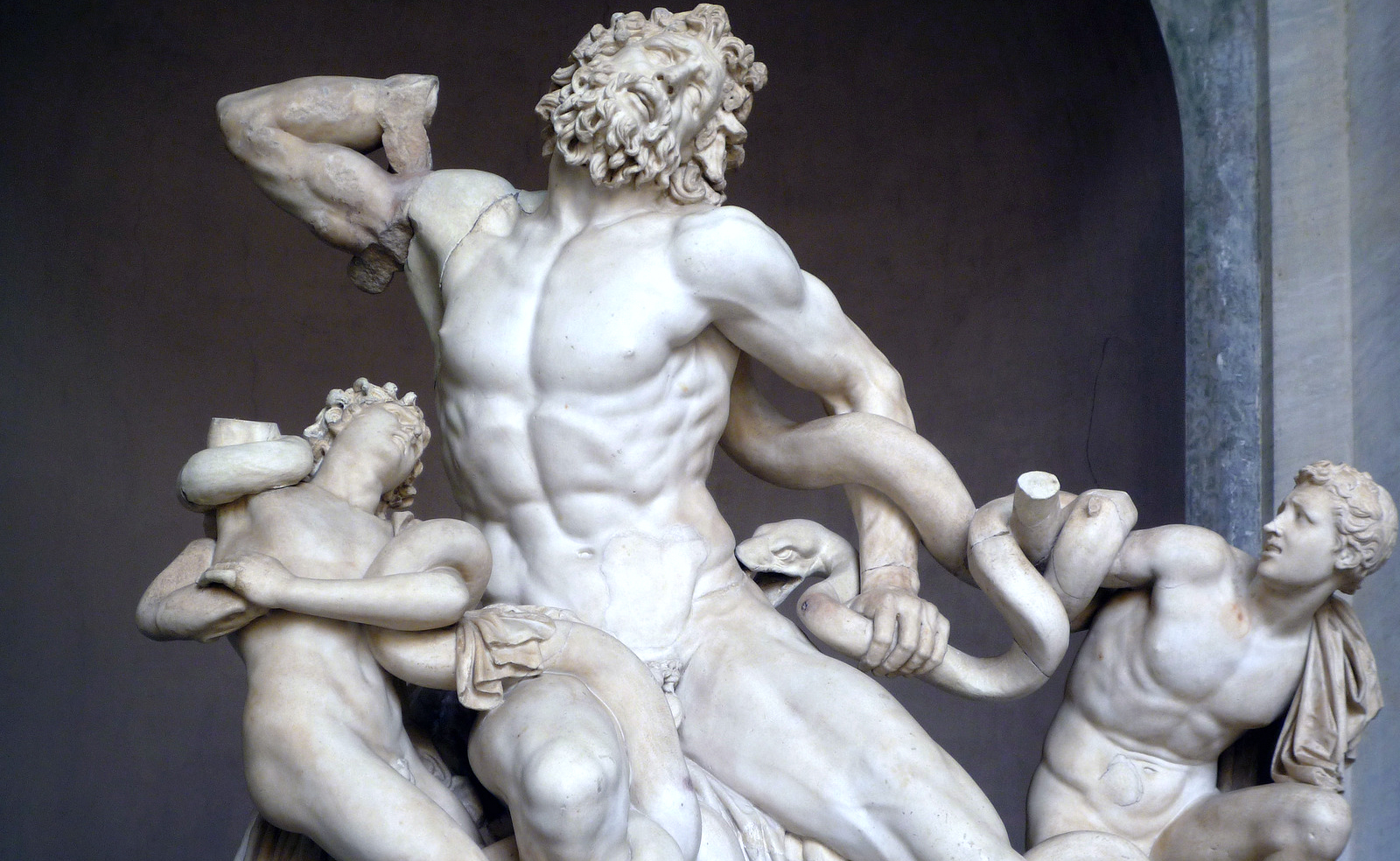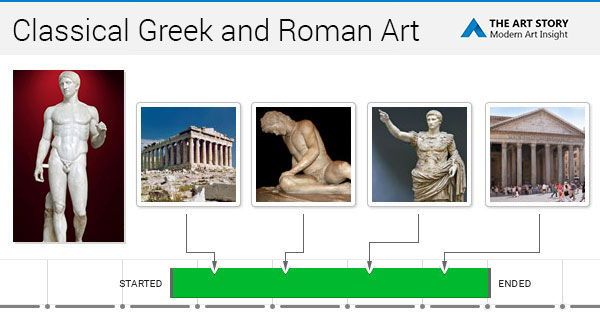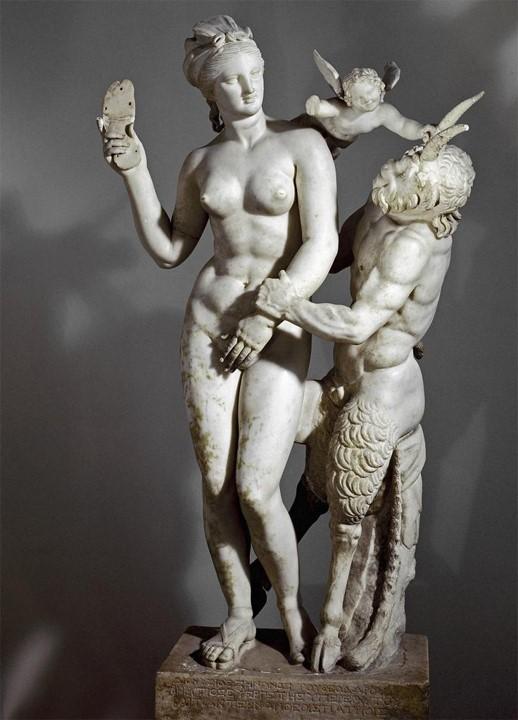True or false Classical sculpture was both naturalistic and idealistic. The use of the coffer in _____ helps lighten-both visually and.

The Story Of Art Symbolism Idealism And Realism Carolyn Anderson Blog
The more naturalistic a work the more it looks like our world and the less naturalistic the less so.

. Defined by a careful observation of nature a new concern for the mechanics of the body and the pursuit of. The speaker whose personality is unwittingly revealed as he speaks and Porphyri Ditulis sipriano Maret. Ancient Greek sculpture represents a development from idealism to naturalism.
The origin of sculpture in Greek and Roman art can almost be divided into distinct categories- classical and idealistic vs naturalistic and emotional sculpture work. Written By weisinger March 09 2022 Add Comment. While studying salivation in his laboratory Pavlov noticed that his.
Classical sculpture was both naturalistic and idealistic. The only materials available to the Egyptian sculptors were stones that had a very high Mohs scale of. Ancient Greek sculpture of the Classical period depicts beauty through the balance of naturalism and idealism.
3 points QUESTION 25 1. The three main principles of. Classical sculpture was both naturalistic and idealistic.
For details of art movements. Were Classical sculpture both naturalistic and idealistic. Annibale Carracci 1560-1609 influenced by Federico Barocci1526-1612 and others produced an idealistic naturalism based on Classical models and though he could depict everyday scenes with remarkable truth his world is an idealised one based on the Classical concepts of.
What was a fundamental difference between Greek classical sculpture and Greek Hellenistic sculpture. Contains some random words for machine learning natural language processing. The High Classical Greek art was more idealistic and it showed how the Greeks wanted to be portrayed and the Hellenisic art is much more realistic.
Classical sculpture became increasingly naturalistic and began to the show the body as alive and capable of movement while maintaining an interest in portraying the ideal human anatomy. An example of this is the bust of Pericles by Kresilas. Classical Greek sculpture is both naturalistic and idealistic.
Defined by a careful observation of nature a new concern for the mechanics of the body and the pursuit of ideal forms Classical Greek sculpture represents a radical departure from the compact forms and upright poses of Archaic male nudes. Caravaggio The Doubting of Thomas c. The Classical art emphasizes rational simplicity order and restrained emotions.
Were developed in the late fifth century BCE. Classical sculpture was both naturalistic and idealistic. Which statement about Greek sculpture is false.
The change from Archaic to Classical art was during the Golden Age. Classical Greek sculptors were more imaginative because the Enlightenment released them from the dogma of the pharoahs. Classical Greek figures appear more relaxed than the rigid formal Egyptian and early Greek sculptural poses because _____.
The rigid poses of Archaic figures gave way to a greater interest in anatomy and more relaxed poses. Classical sculpture was both naturalistic and idealistic. Classical sculpture was both naturalistic and idealistic.
1601-02 oil on canvas 107 x 146 cm Sanssouci Picture Gallery Naturalism is resemblance to the real world as we see it around us. These relief sculptures are known for their dynamic movement and realism and decorated the temple chambers interior walls. In the Classical period this conflict reached an apotheosis when the two forces were balanced against each other.
The _____ period brought more humanistic and naturalistic style with emphasis on expression and emotion. Naturalism realism abstraction and idealization. Defined by a careful observation of nature a new concern for the mechanics of the body and the pursuit of.
Classical Greek sculpture is both naturalistic and idealistic. A similar conflation can be found in the medium of classical sculpture which is both naturalistic and idealistic. Classical sculpture was both naturalistic and idealistic Government assembly halls The first Christian churches were patterned after basilicas used by he Romans as.
The Parthenon Marbles created by Phidias are perhaps the most famous examples of this style of Classical Greek sculpture. This sculpture and other reliefs of this time have influenced later artists like Auguste Rodin. Sculpture - Early classical period.
Temples and other public buildings. On the other hand much freedom could be seen in the Hellenistic art forms. The Greeks and Romans both represented gods and rulers in the form of statues a combination of religious and political influence.
For ham rigs tips. CoNLL17 Sk Ditulis Claude Farley Maret 09 2022 Tulis Komentar Edit. By signing up youll get thousands of step-by-step.
Played a major role in the daily lives of the people of ancient Greece. Indeed John Boardman describes the work of Polyclitus Fig 2 a sculptor who canonized the male athletic body in classical period art as ideally realistic Boardman 157. Can be seen on the Temple of Athena Nike built on the Acropolis between 427 and 424 BCE.

Classical Sculpture Was Both Naturalistic And Idealistic Fotospopartphotography

Form And Reality The Classical Greek Balance Of The Ideal And The Natural Disrecognized Space

Introduction To Ancient Greek Art Article Khan Academy

Classical Art And Architecture History Theartstory

Art History Midterm Flashcards Chegg Com

Classical Greek Sculpture Is Both Naturalistic And Idealistic True Or False Study Com

0 comments
Post a Comment